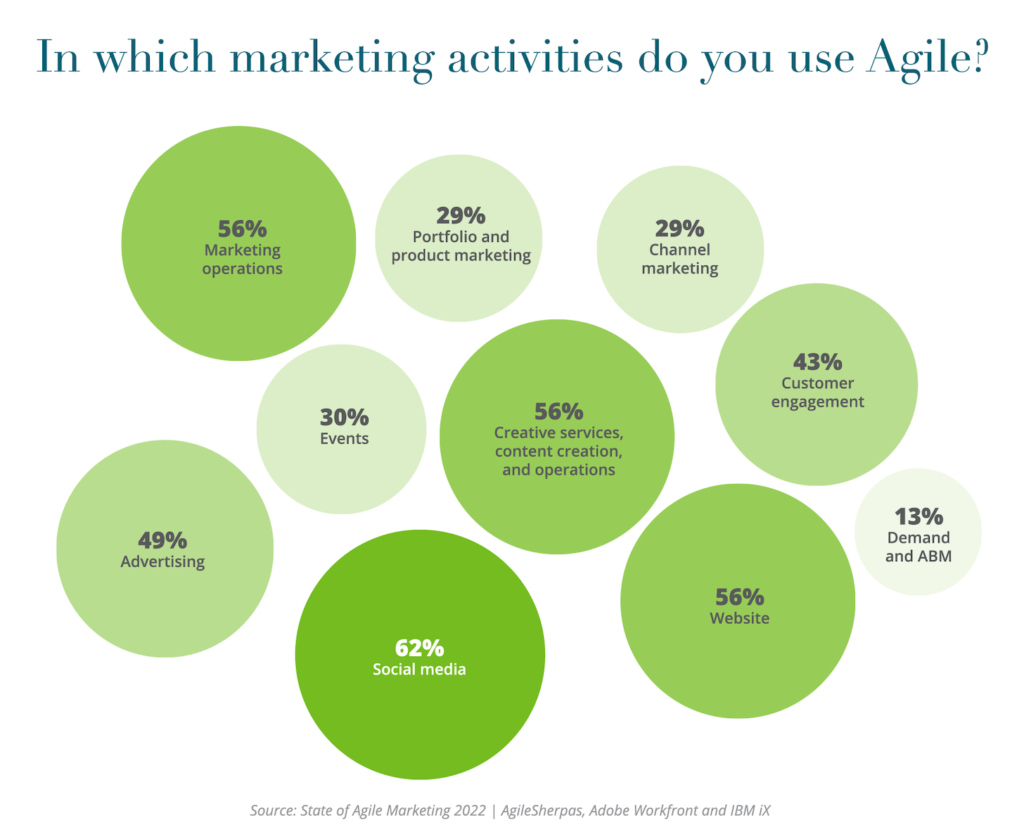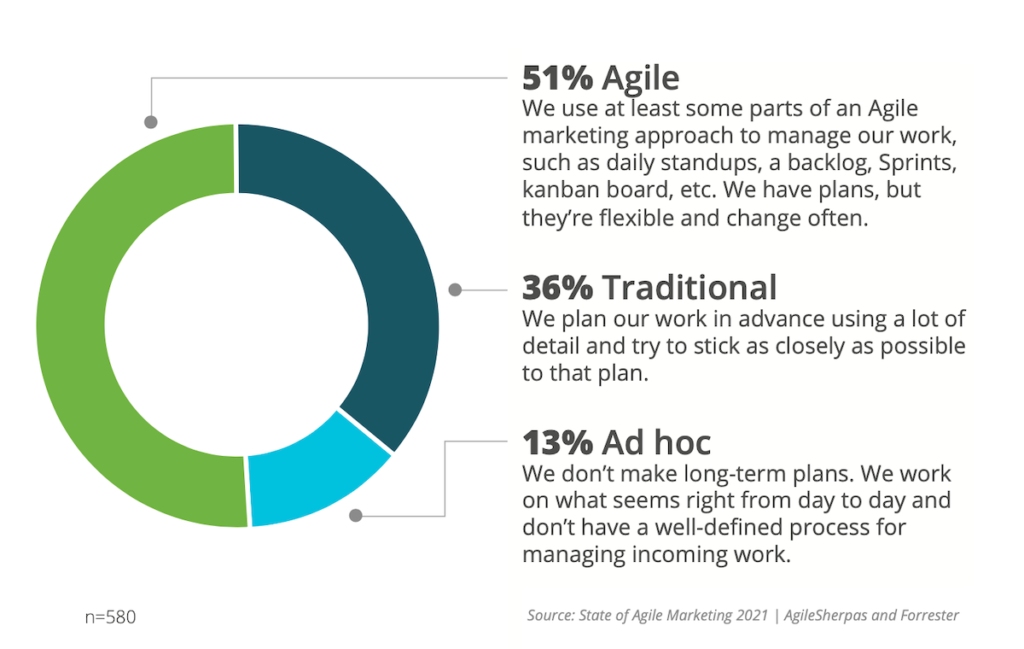The following is another guest Q&A conducted by Claire Schoen, an interview with Barre Hardy of CMG, who will be one of our featured speakers at MarTech later this month.
Barre Hardy is Associate Partner, and head of the marketing performance practice at CMG. She created the firm’s Agile for Marketing practice and leads The CMO’s Agenda, an annual study on key challenges and opportunities facing marketing leadership based on insights driven from interviews with leading CMOs. We spoke with Barre recently about marketing performance and the rise of agile marketing.
Keep reading for an up close and personal interview with Barre. Then secure your place to meet her at MarTech.
Tell me a bit about your background.
I have always worked at the intersection of marketing, technology, and data. Having spent a good part of my early career in digital marketing, success hinges on finding and using the insights around the customer experience and behavior.
When I went to General Electric after business school, I was brought into the world of operational discipline as it related to the commercial side of the business. I was on six-month rotations to different businesses as a part of their commercial leadership program and learned how to improve the operational models to yield in market results, including systems, organizational capabilities, teams, and the processes that support them.
When commercial organizations have the right focus, team, and supporting capabilities, great things can happen. I have turned this into a career as a consultant at CMG — helping marketing organizations achieve greater performance.
Who are your clients and what type of work do you do?
CMG works with start-ups to Fortune 500 clients to help them achieve commercial performance through strategy development, commercialization and marketing operations. We work across a broad range of industries including telecom, cable, financial services and software verticals.
I lead up our marketing performance practice which is focused on helping marketing organizations operate more effectively and efficiently. Team’s marketing performance is frequently hindered by the inability to integrate technology and data to get a richer picture of the customer to drive more informed decisions, but also by how the teams work together (the people side) — getting the right team, doing the right work, at the right time.
Here are two examples of recent projects:
- Worked with a large financial services client to adopt the agile marketing operating system. We worked with marketing leadership to help define goals and objectives, and then designed the operating system (team structure, processes, performance management components, governance, measurement, and rewards system) and worked with the client to communicate and roll out the new way of working.
- Worked with a Fortune 500 pharmaceutical client to align marketing and sales processes and technologies in order to have a more complete picture of the customer and make more informed marketing decisions. This project included aligning on business requirements, agreed definitions of leads, and project managing the actual integration of the systems working in conjunction with sales operations, marketing, and IT.
There’s a real need for marketers who are well versed in technology, who can turn data into insights and insights into enhanced customer experiences. I think the power of technology is farther along than the talent. The talent is developing, but the technology is moving faster.
Have you found that IT and marketing departments are working better together than they were when you started consulting?
Yes. There’s definitely a recognition that go-to-market success is a function of all teams working well together, especially IT and marketing.
What are you going to cover in your session At MarTech?
Our panel, moderated by Scott Brinker, is titled “Agile Marketing: How To Really Make It Thrive.” We’ll be answering questions about best practices, tips and tricks for using agile marketing and why it’s taking root today. The other presenters are Jascha Kaykas-Wolff, CMO of Mozilla; David Lesue, Creative Director at Workfront, and Roland Smart, VP of Social & Community Marketing at Oracle.
What are some of the reasons that organizations are moving to an agile marketing model?
Here are three:
- There’s a recognition that marketing needs to elevate their performance to be more significant contributors to the bottom line of the organization. Yet, marketing organizations currently aren’t set up to deal with the pace of the digital customer. Most marketing organizations have lengthy go to market models. Just doing what you do today, faster, isn’t going to cut it. Marketing organizations need to change the way they work to drive increased performance and achieve the effectiveness and efficiency they need to stay relevant in the market. Agile offers that flexible, collaborative, data-driven approach.
- To be truly customer-focused you have to start and stop with the customer, use data to drive better customer experience. Agile marketing provides a lens through which the customer is always top of mind and by which you are continually learning about the customer experience.
- When cross-functional teams are empowered to work together and jointly accountable to goals, they do amazing things. People are happier, more efficient, and more productive – which is great for the business leader. You are truly harnessing the potential of your team. At the end of the day, deciding to go in this direction is about managing change. It’s about operational change – team structure, culture, decision process.
What are some misconceptions about agile marketing?
- You can just put the process in place and get the benefits. No. Agile marketing is more than a process. It requires having the right focus, team, and culture to sustain it. It has to be actively managed; you can’t just adopt the methodology. Companies should treat this as an operating system.
- You have to follow the rulebook. No. People think that agile marketing is a formal, structured process with lot of meetings. Teams should modify the approach as works for them and continually improve as they go.
Do you have any advice for a recent college graduate looking to get into marketing?
This isn’t specific to marketing, but I’m going to say it anyway. If you can, take a year off. You have your whole life to work. Get a new experience and broaden your horizon. It will be hard to find the opportunity to do that again.
I know that isn’t practical for everyone, so here’s what I would say: It’s such an exciting time to be in marketing. Given the complexities in marketing and martech and the end markets, you need to be a student of your business. And you also need to be a student of your customer. It doesn’t matter how big or how small your role is in the organization, or what your job is if you can understand these, you’ll nail it, you’ll be a success.
What can you tell us about yourself that we can’t learn from your LinkedIn profile?
I love being the mother of two boys and getting outside with them doing all sorts of sports and activities. Rafting, skiing, just being outdoors. I love the energy of the boys’ youthfulness.
Thank you Claire and Barre!




Great summary of the way marketers are dealing with digital marketing…content marketing in particular. There’s simply more money being spent on digital marketing, advertising and PR so there’s more resources. It’s an opportunity to experiment and innovate.